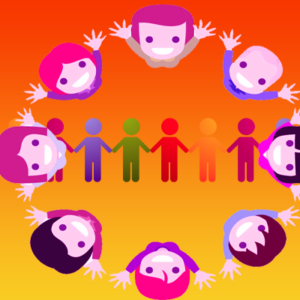The Common Stereotypes When It Comes To Marketing
As the name implies, stereotypes are what many people believe to be true about another person or product.
The concept of stereotype is a way of defining and limiting people in terms of appearance (skin color, type of clothing, use of accessories, and others), place of birth (region or country of origin), and behavior (religion, culture, belief, level of education, and much more.
In short, stereotypes are impressions, preconceptions, and “labels” or expressions of general and simple, common sense. As the name implies, stereotypes are the types of things that many people do. In a society, belief is to be true about another person or product. For example, the expression “what is old is useless.” Another example is to refer without fundamental knowledge that “the brand of product X is better than product Y.”

Stereotype Examples
How To Teach Stereotype Examples Like A Pro Here»
Ethnic stereotype represents an ethnic group or people uniformly as if all were equal. Ethnic group, people or ethnicity, is a category of people who identify with each other. Identity is the common genealogy or ancestry or similarities in language, history, society, culture, or nation in common. For this group of people, the stereotypes are cultural heritage, ancestry, the myth of origin, homeland, language or dialect, symbolic systems such as religion, mythology, ritual, cuisine, style of dress, art, and physical appearance.
Another example of stereotypes – Social stereotypes: influence behavior and behavior in social interactions when this link frames social actors. Social stereotypes collectively share some attribute, characteristic or psychological, moral or physical, to a human group. It is a form by applying one or more criteria, such as age, sex, intelligence, religious affiliation, e.g.
In stereotype marketing, it is the group of people who do not see what is true that creates the stereotypes that the public believes to be true. Stereotype marketing is an informal concept.
Stereotypes are usually used in marketing to create a feeling in the public’s minds that a product is appealing and that it is something that they want. Over time, they have taught that certain stereotypes about that product are accurate.
A prime example of this is that many television shows on television have an entire campaign centered around stereotypes, such as the sexy teacher or the football player.
These stereotypes create the public feel that a product is attractive and desirable, so advertising agencies use them in their marketing.

Business Motives
Your Key To Success Business Motives Here»
Stereotypes have a considerable impact on the public. They can lead a person. To market, a product is something they want when it is not something they need, this can significantly affect how a person buys the product and how they feel about it later. The public needs to live their lives not based on stereotypes but on the stereotypes they find about these products.
In any form of marketing, customers are usually the center of focus. Having enough details regarding the customer is essential for the products and services’ successful advertisement and marketing. Collecting data from the customers is usually not easy, even with the advancement of technology. As a result, there is use of projections by marketers to refine the targets. However, there are specific routes stereotypes in marketing that one should be cautious about, the product itself.
When it comes to marketing, the typical stereotypes may occur in direct selling, understanding consumer behavior, principles of marketing, and viral marketing. The stereotypical assumptions in marketing should continuously be checking as they do not represent the statistical data. The traditional stereotyping of customers does not appropriately work. As a result, most businesses spent time and resources studying consumer behavior. Therefore, the typical stereotypes when it comes to marketing are available here.

Racial Stereotyping in Marketing
Racial Stereotype In Marketing Smackdown Here»
One of the common stereotypes that are still, unfortunately, in marketing is race. There are numerous types of racial advertisements recently used by particular corporates and companies. Some of such advertisements usually create negative feelings.
It is important to note that racial stereotypes are numerous in advertising; they usually vary from extreme cases to targeting particular demographics.
Notably, multi-racial product promotional methods are currently becoming the norm. However, there is still a massive divide in the consumers’ cultural views and racial tension. In most cases, advertisements never showcase diversity and equity within the community well.
Most companies do not always come up with such adverts with bad intentions. The marketing companies and the corporates usually have the goal of coming up with non-offensive adverts appealing to their target groups.
Such groups do not always intend to alienate any consumer groups as it will not auger well with their venture.
In many instances, marketing will always get going to particularly appeal to particular groups, which may be the minority groups; this may at times turn out to be racially divisive and viewed as a marketing stereotype. The consumer behavior and direct selling in these groups may be the general cause of such decisions.
Age marketing stereotype, marketers will apply stereotypes in segregating and comparing one generation to another in many circumstances. As a result, advertisers define the consumer decision-making of people based on their ages and generations. Such assumptions are often misleading and can affect the target audience.

Gender Roles Stereotype
The Secret of Gender Roles Stereotype Here»
In gender role marketing, some content usually displays stereotypical gender roles. There are many forms of marketing where gender displays are mostly to showcase the roles of one gender in comparison to another. In many types of marketing solutions, the creative teams possess gender. The main reason behind this is that we define ourselves on this basis.
As a result, there is a lot of gender bias and stereotyping forms of marketing. That has been highlighted and continuously discussed in the open. Such stereotypes usually affect society, bringing a certain mindset on how a particular gender is a view.
Women are usually the ones that such stereotypes have affected most compared to their male counterparts.
Regardless of the social role, marketing will decide if a customer for a particular product should be male or female. The stereotype is always portraying by applying old beliefs that a man is the head of the family and unconcerned household while women are the opposite.
Gender stereotype is also depicting in adverts targeting children. Such type of marketing in kid’s toys is on a vast proportion. Where cars are for boys and dolls are for girls, this is socially discriminatory.

Stereotypes Involving Children
Want More Money Start Stereotypes Involving Children Here»
In many advertisements, children usually show up as cute and happy; this is unlike gender and racial marketing stereotypes since it will appeal to parents and almost all decision-makers.
This type of advertisement, stereotype, marketing is always portraying as bringing solutions to parents to care for their kids. An example of this is when a diaper turns to a different color when wet.
This form of stereotype in marketing will always portray kids with smiling faces, thereby a broad appeal. Most marketers prefer this method to another stereotype to boost sales through viral marketing. Children will always like adverts with other children.
As a result, they will influence their parents and other families into using that particular product.

Stereotypes In Advertising
Typecast In Publicity Adventures Here»
Stereotypes of publicity involve children to reach middle-class families; consequently, it will involve the entire seemingly perfect family, with smiling children and a pet.
Such a strategy has been widely operating to target particular consumer groups. The messaging of the advertisement is always on the consumer behavior of the middle class.
Most notably in stereotyping in marketing is how children view the business and its impact on their lives. In most cases, children will view adverts via television, radio, billboards, and online platforms.
As a result, they will consume content full of biases and stereotypes. Additionally, they will consume such content when watching television, programs with adults, and at the same time in commercial breaks when watching cartoons.
Another effect that advertisement stereotyping may cause on children, in particular, is kid’s center products. For example, if this is a baby doll with a particular type of hair, the petite body is biased towards women’s bodies and their role in society.
There are many types of stereotypes taking part in the different forms of marketing in general. Such biases vary from gender roles, children, age, and racial backgrounds.
Stereotyping in marketing can result in business and failure to reach specific potential markets. As a result, it is suitable to undertake much research in data and find a suitable implementation method.
Therefore, relying on statistics is the appropriate way to follow.

